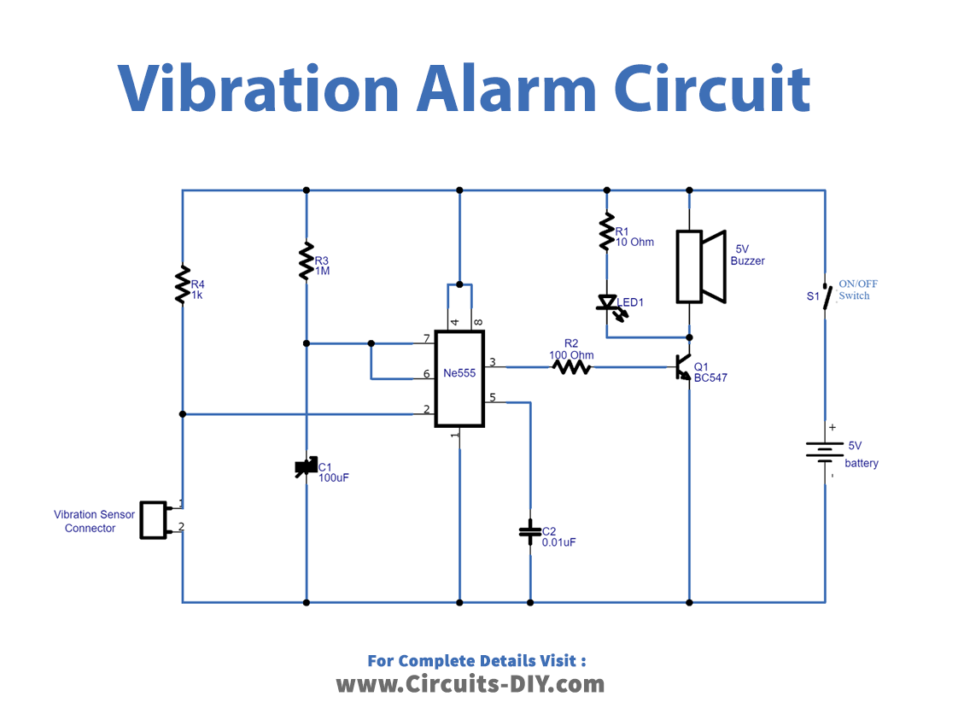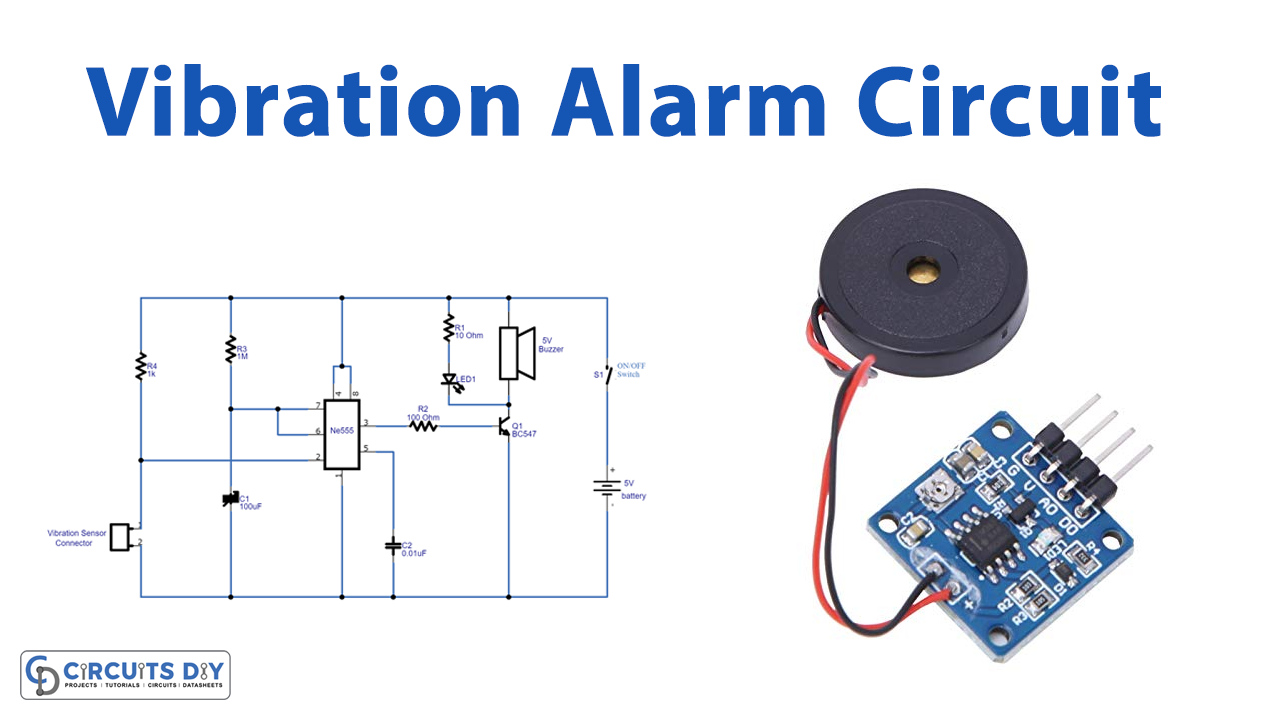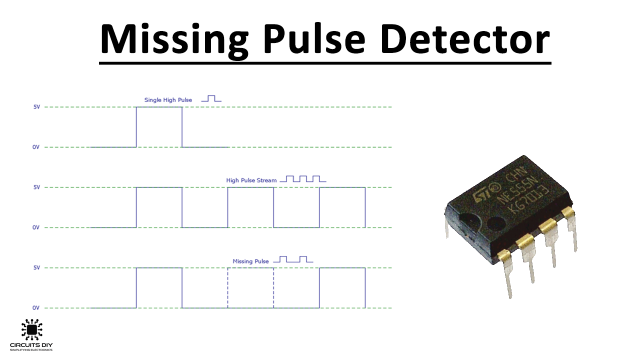Introduction
Alarm circuits have a wide range of applications in different industries. This alarm sensor includes an intruder alarm, door alarm, or other detector alarm circuits. This article also discusses one of those alarms; called alarm sensors. So, in this tutorial, we are going to make a “Vibration Alarm Circuit using IC555”. The vibration sensor usually employs the piezo method to detect the vibrations. This alert may be quite beneficial in a room or places where there should be no movement at all. We will sense no vibration in a completely motionless room with no movement, and the alarm will not sound. The alarm gets activated if the circuit senses a vibration, which might show that someone has entered the room or that there is a movement disruption.
We use 555 timer IC and vibration sensor as the key components to make this circuit along with some easily available components. The circuit is easier to make and requires a little electronics knowledge.

Hardware Components
The following components are required to make Vibration Alarm Circuit
| no | Component | Value | Qty |
|---|---|---|---|
| 1. | IC | NE555 Timer | 1 |
| 2. | Transistor | BC547 | 1 |
| 3. | Buzzer | – | 1 |
| 4. | Switch | – | 1 |
| 5. | Battery | 5v | 1 |
| 6. | Electrolyte Capacitor | 100uF | 1 |
| 7. | Capacitor | 0.01uF | 1 |
| 8. | Resistor | 10Ω, 100Ω, 1KΩ, 1MΩ | 1,1,1,1 |
| 9. | Battery | 9V | 1 |
| 10. | 2-Pin Connector | – | 2 |
NE555 IC Pinout

For a detailed description of pinout, dimension features, and specifications download the datasheet of 555 Timer
Vibration Alarm Circuit

Working Explanation
In this Vibration Alarm Circuit using IC555, when the sensor detects vibration, it generates a trigger signal, which activates the timer IC 555, resulting in a Mono timing pulse lasting up to 110 seconds. We applied the output pulse from pin 3 to the BC547 NPN transistor, where Q1 operates as a switching device, making contact between the buzzer, LED, and ground supply. This lasts until the monopulse ends. As a result, the buzzer emits an alarm sound. If the circuit requires a permanent location, a +5V DC adapter can be connected to the alarm circuit.
Application and Uses
- In the home, office, and industrial automation.
- In banks, private lockers, etc.
- Can also be utilized in automotive applications.













